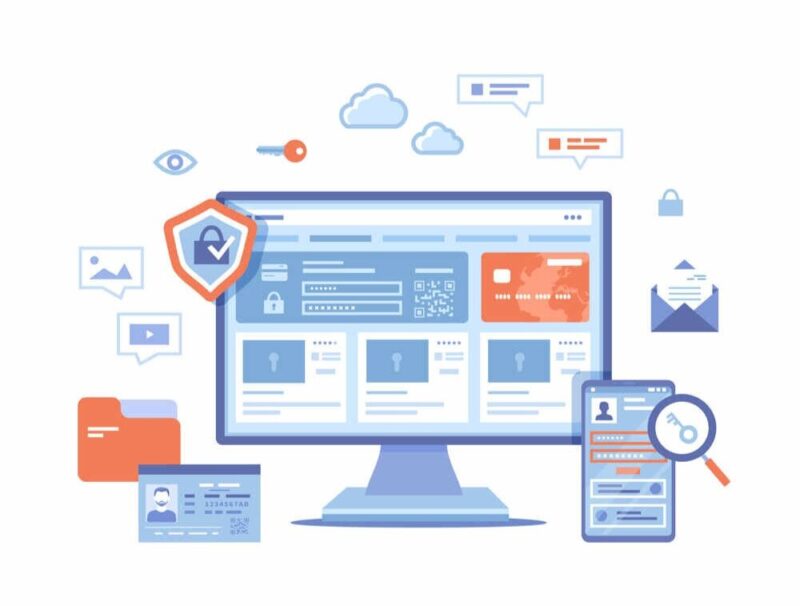In the ever-evolving landscape of the internet, where websites serve as digital storefronts for businesses, educational platforms, and personal expressions alike, encountering a non-functional website can be a frustrating roadblock for users. Whether you’re attempting to access a critical service, research information, or simply browse for entertainment, the inability to reach a desired webpage can disrupt your online journey.
This comprehensive guide aims to equip you with the tools and knowledge to effectively diagnose and understand the reasons behind website malfunctions in 2024. By delving into various techniques and insights, you’ll be better prepared to navigate these digital hiccups with ease.
Website Downtime
Before we dive into the diagnostics click here, it’s crucial to grasp the concept of website downtime. In simple terms, downtime refers to the period when a website is unavailable or not functioning as intended. This can be due to a multitude of factors ranging from server issues, maintenance, and high traffic overload, to more complex technical glitches. Recognizing that downtime can be a common part of the website’s life cycle helps set the stage for a more informed troubleshooting approach.
Initial Checks: Start With the Basics
The first step in diagnosing a website’s accessibility issue is to perform some basic checks. Start by refreshing the webpage. It might sound trivial, but sometimes a simple page reload can resolve the problem. Next, ensure that your internet connection is stable and functioning correctly by visiting other websites. If other sites load without issues, the problem likely lies with the specific website you’re trying to access. Additionally, clearing your browser’s cache and cookies can solve certain access issues caused by outdated or corrupted data stored in your browser.
Use Online Tools to Gauge Website Status

One of the most effective ways to check if a website is down is by using online status checker tools. These tools perform a check from different locations around the world to determine if a website is accessible globally or if the problem is localized to your region. Websites like “Down for Everyone or Just Me” offer a straightforward way to see if other users are experiencing similar issues with the same site. These tools can quickly help you ascertain whether the website’s downtime is a broader issue or something specific to your network or region.
Delve Into DNS and Server Issues
The Domain Name System (DNS) is the internet’s phonebook, translating domain names into IP addresses. Sometimes, DNS problems can prevent websites from loading. To troubleshoot, try changing your DNS servers to public ones like Google DNS or OpenDNS. This can circumvent local DNS issues and potentially restore access to the website.
Server issues, on the other hand, are beyond a regular user’s control. They can range from server overloads, especially during high-traffic events, to technical malfunctions within the website’s hosting environment. While you can’t directly fix server-side problems, understanding that the issue may not be on your end can save you time and frustration.
Check for Browser Compatibility
As the web evolves, so do the technologies that drive it. Sometimes, a website may not load properly because it’s not compatible with your browser or requires certain features that are disabled. Try accessing the website using a different browser or device. If it works on one platform but not another, browser compatibility issues are likely at play. Ensure your browser is up to date, as the latest versions often include necessary updates and security patches that can resolve compatibility problems.
Network Troubleshooting
Network configuration and security settings can inadvertently block access to certain websites. If you’re using a firewall or network security software, verify that it’s not restricting access to the website. Additionally, if you’re on a corporate or public network, there might be filtering systems in place that block specific sites. In such cases, contacting your network administrator or switching to a different network might provide a workaround.
Engage With the Community

When faced with a puzzling website outage, seeking insights from the online community can be invaluable. Forums, social media platforms, and tech support groups are rich sources of shared experiences and solutions. Often, other users may have encountered similar issues and can offer advice or solutions. Moreover, official social media accounts for the website or its support team may post updates regarding downtime or maintenance periods, providing clarity on the situation.
FAQs
What should I do if changing my DNS settings doesn’t resolve the website access issue?
If altering your DNS settings doesn’t fix the problem, it could indicate a more complex issue beyond a simple DNS resolution error. In such cases, consider using a Virtual Private Network (VPN) to access the website. A VPN can bypass geographical restrictions and sometimes resolve issues caused by local network limitations. Additionally, it’s worth checking if the website is blocked by your internet service provider (ISP) for any reason.
How can I tell if a website’s SSL certificate issues are causing the access problem?
An invalid or expired SSL certificate may result in a warning message in your browser indicating that the connection is not secure. If you encounter such a warning, it’s a sign that the website’s SSL certificate could be causing access issues. However, proceed with caution and avoid bypassing these warnings for sensitive websites, such as those requiring login credentials, as it could compromise your security.
Are there any browser extensions that can help diagnose website access issues?
Yes, there are several browser extensions designed to help diagnose website issues. Extensions like HTTP/HTTPS Header Live, Web Developer, and Ghostery can provide insights into what’s happening when you try to access a website, including tracking requests, viewing headers, and identifying potential trackers or scripts that might be causing issues.
What role do cookies and browser cache play in accessing websites, and how can I manage them effectively?
Cookies and browser cache store information from websites to speed up the loading process and remember your preferences. However, corrupted or outdated cache and cookies can cause websites to load incorrectly or not at all. Managing them effectively involves regularly clearing your browser’s cache and cookies, which can be done through the browser’s settings menu. This often resolves access issues related to stale data.
How can I check if a website is being updated or undergoing maintenance without access to the site itself?
If you suspect a website is down due to updates or maintenance, check the website’s social media pages or official forums for announcements. Website administrators often communicate downtime periods and maintenance schedules through these channels. Another approach is to use third-party status monitoring websites that track the uptime of popular services and can provide historical downtime data.
If a website loads slowly but doesn’t fully time out, what steps can I take to improve loading times?
Slow loading times can be caused by various factors, including network congestion, server performance issues, or large web page sizes. To improve loading times, try accessing the website during off-peak hours, disabling unnecessary browser extensions that may slow down your browsing, or using a content delivery network (CDN) service if you’re managing a website facing these issues. Optimizing image sizes and minimizing the use of heavy scripts can also enhance website performance.

Final Words
Navigating the digital landscape of 2024, with its complex web of technologies and networks, requires a multifaceted approach to troubleshooting website access issues. By starting with basic checks, utilizing online tools, understanding DNS and server dynamics, considering browser compatibility, performing network troubleshooting, and engaging with the community, you’re well-equipped to diagnose and comprehend the myriad reasons behind website downtimes.
Remember, while not all problems are within your power to resolve directly, a systematic approach can help identify the issue’s source and, at times, offer a temporary workaround. In the dynamic realm of the internet, patience and persistence are key to overcoming the inevitable hiccups along the digital.
Related Posts:
- Who Pays Health Insurance While on Long-Term…
- What Kind of Lawyer Do I Need for Debt Collection?…
- Should You Opt for Full Coverage on Your First Home?…
- 12 Signs Your Business Should Start Working With a…
- How to Tell If Your Blog Post Was Written by a Human…
- How To Use Leaflets as a Marketing Tool? 10 Tips and…















